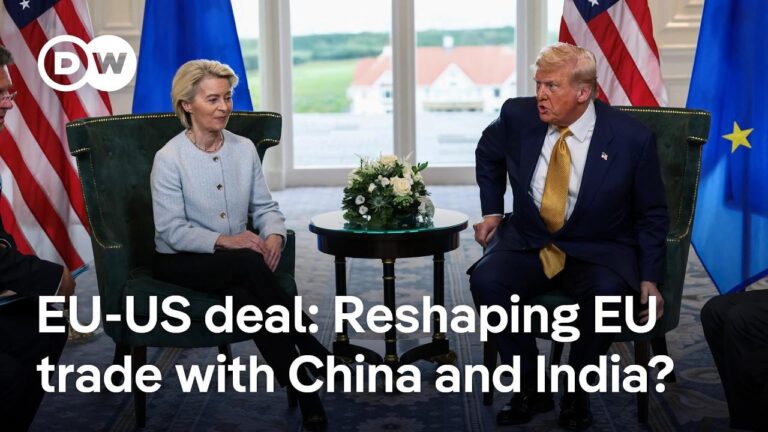The landmark trade agreements between the United States and the European Union, and separately between the US and the United Kingdom, mark significant developments in transatlantic economic relations. But how do these deals stack up against each other in tangible terms? In this article, we break down the key figures and statistics behind the US-EU trade deal and compare them directly with the recently concluded US-UK agreement, offering a clear numerical perspective on what each means for trade, tariffs, and market access.
US-EU Trade Deal Overview Reveals Scope and Economic Impact
Spanning multiple sectors, the recently unveiled trade agreement between the United States and the European Union aims to deepen economic ties and reduce longstanding barriers. Key provisions focus on lowering tariffs, harmonizing standards, and opening markets for services and digital trade. Analysts project that these measures could boost bilateral trade volumes by an estimated 15% within the first five years of implementation, injecting billions into both economies. Enhanced cooperation on regulatory frameworks is expected to streamline cross-border investments, benefiting industries from automotive manufacturing to pharmaceuticals.
Compared to the UK’s post-Brexit deal with the US, the US-EU pact demonstrates a broader scope and greater economic impact. While the UK agreement mainly addresses customs arrangements and limited tariff adjustments, the US-EU deal delves deeper into complex issues such as data privacy alignment and sustainable trade practices. Below is a quick comparison highlighting key trade aspects:
| Aspect | US-EU Deal | US-UK Deal |
|---|---|---|
| Tariff Reductions | Up to 10% on industrial goods | Limited, mainly agricultural |
| Regulatory Alignment | Extensive (digital, environmental) | Basic conformity mechanisms |
| Market Access | Comprehensive across services sectors | Selective market openings |
| Sustainability Clauses | Included | Minimal references |
Comparing Key Provisions of the US-EU and UK Trade Agreements
Trade tariffs and market access lie at the core of the differences between the US-EU and US-UK agreements. The US-EU deal, covering the world’s largest trade bloc, focuses heavily on reducing tariffs on industrial goods, agricultural products, and technology components, fostering a seamless flow of $900 billion in trade annually. Conversely, the US-UK agreement, while ambitious, centers more on digital trade, data flow, and regulatory alignment post-Brexit, reflecting the evolving nature of economic priorities rather than deep tariff cuts.
Other critical disparities include:
- Regulatory standards: The EU maintains stringent environmental and consumer protections, while the UK opts for more flexible guidelines to boost competitiveness.
- Services sector: The US-EU pact promises greater market liberalization, particularly in finance and telecommunications, whereas the US-UK deal prioritizes cybersecurity and innovation support.
| Provision | US-EU Agreement | US-UK Agreement |
|---|---|---|
| Tariff Reductions | Up to 15% on industrial goods | Limited, focus on strategic sectors |
| Digital Trade | Moderate regulations | Robust data flow commitments |
| Environmental Standards | Strict EU compliance | Flexible UK standards |
| Services | Extensive market access | Innovation and cybersecurity |
Policy Recommendations for Enhancing UK Trade Competitiveness Post-Brexit
To elevate the UK’s trade position post-Brexit, policymakers must prioritize streamlined customs procedures and enhanced regulatory cooperation with key global partners. Emulating aspects of the US-EU trade framework, such as mutual recognition agreements and standardized product certifications, could significantly reduce non-tariff barriers. Moreover, investing in digital infrastructure for trade facilitation would enable faster clearance times and improved supply chain transparency, boosting competitiveness across sectors.
Additional focus is required on diversifying trade relationships beyond traditional European markets. A strategic patchwork of bilateral agreements tailored to sectors where the UK maintains strong competitive advantages-such as fintech, pharmaceuticals, and green energy-will be essential. Below is a snapshot comparing core elements of the US-EU deal to the UK’s current arrangements, underscoring areas for urgent policy enhancement:
| Trade Aspect | US-EU Deal | UK Trade Deal | Policy Priority |
|---|---|---|---|
| Tariff Elimination | 95% Coverage | 75% Coverage | Expand tariff scope |
| Regulatory Alignment | High with Joint Committees | Fragmented | Increase harmonization |
| Customs Procedures | Single Window Systems | Multiple checkpoints | Simplify border controls |
| Digital Trade Rules | Comprehensive | Limited | Strengthen digital frameworks |
- Enhance customs digitalization: Encourage public-private collaboration for e-certificates and AI-powered trade analytics.
- Strengthen sector-specific support: Tailor trade policies to amplify growth in emerging industries and protect strategic assets.
- Bolster trade diplomacy: Establish dedicated trade offices with agile negotiation capabilities for rapid deal-making.
The Conclusion
As negotiations continue to shape the future of transatlantic trade, the figures behind the US-EU deal offer a clear benchmark against which the UK’s own agreement can be measured. While both deals aim to boost economic ties and reduce barriers, differences in scale, scope, and regulatory approach underscore the unique challenges and opportunities each partnership faces. Ultimately, understanding these numbers is key to assessing the potential impact on businesses and consumers on both sides of the Atlantic.




